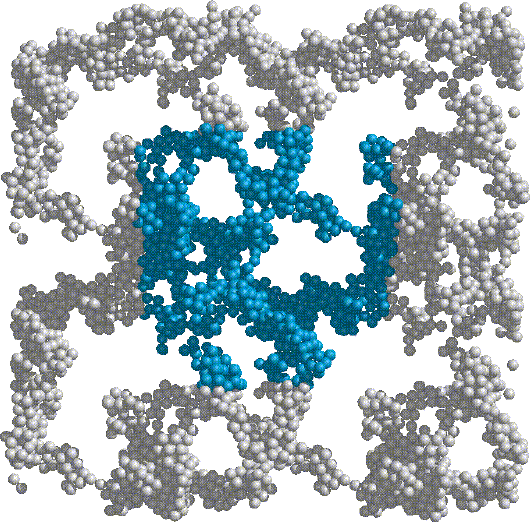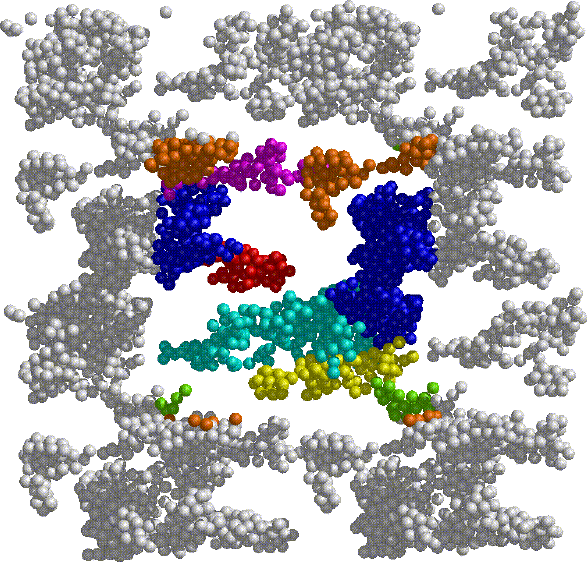
Simulations of Particle Gels
This work on the Brownian Dynamics simulation of colloidal particle gels was done at the University of Leeds in the Procter Dept of Food Science with Prof. Eric Dickinson. In these simulations particles move randomly to simulate Brownian motion and an interaction potential is introduced to make them sticky. The hydrodynamic interaction between particles is very time computationally demanding for large numbers of particles and was ignored in most of our simulations. Only the simple drag interaction with the fluid phase was included. With time, an initial, evenly distributed dispersion of these particles will aggregate to form a network structure similar to those seen in real particle gels such as yogurt. A typical simulated structure is shown in Fig1. Note that the central image (showing the positions of 1000 particles) is surrounded by repetitions to give a better impression of overall structure.

The density of the type aggregated system scales with a fractal dimension over part of its range. This self-similar aspect of the structure is sensitive to the interparticle forces and the rate of aggregation.
Real gels are frequently subjected to shear forces during processing and an important and intriguing aspect of these systems is the relationship between their fractal structure and rheological properties. A typical structure obtained after disruption by a (slow) shear field is shown in Fig 2. In this figure the individual aggregates in the central box are distinguished by colour. Features of the break-up process can be related to the yield stresses that appear in real gels. The simulation of these processes at higher shear rates would need a proper inclusion of the hydrodynamic interaction.

Figure 2
Abstracts:
Home Chemoinformatics Group Dept. of Information Studies University of Sheffield